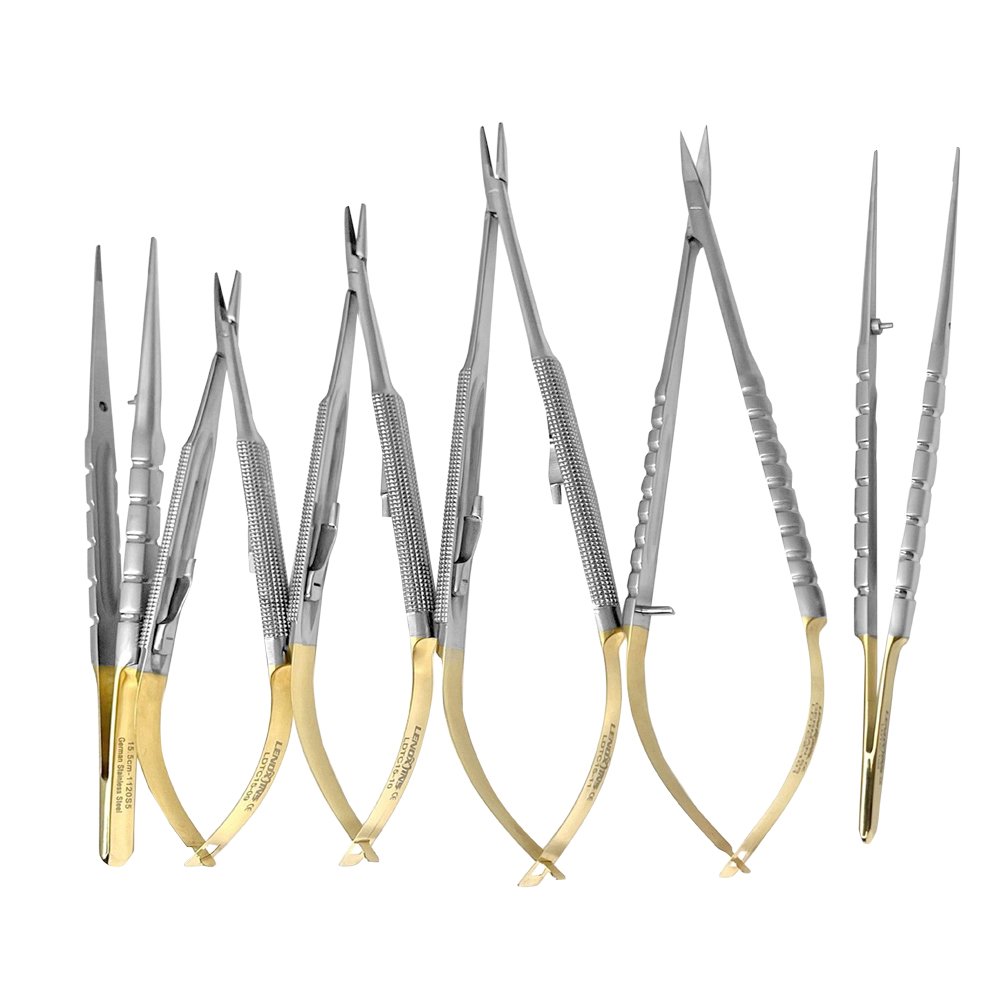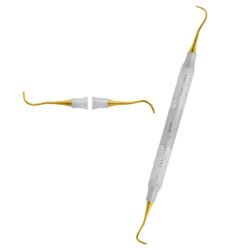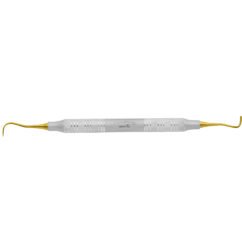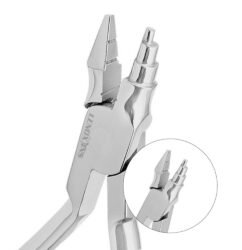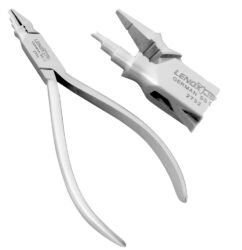Common Tools and Instruments Used By Dentists
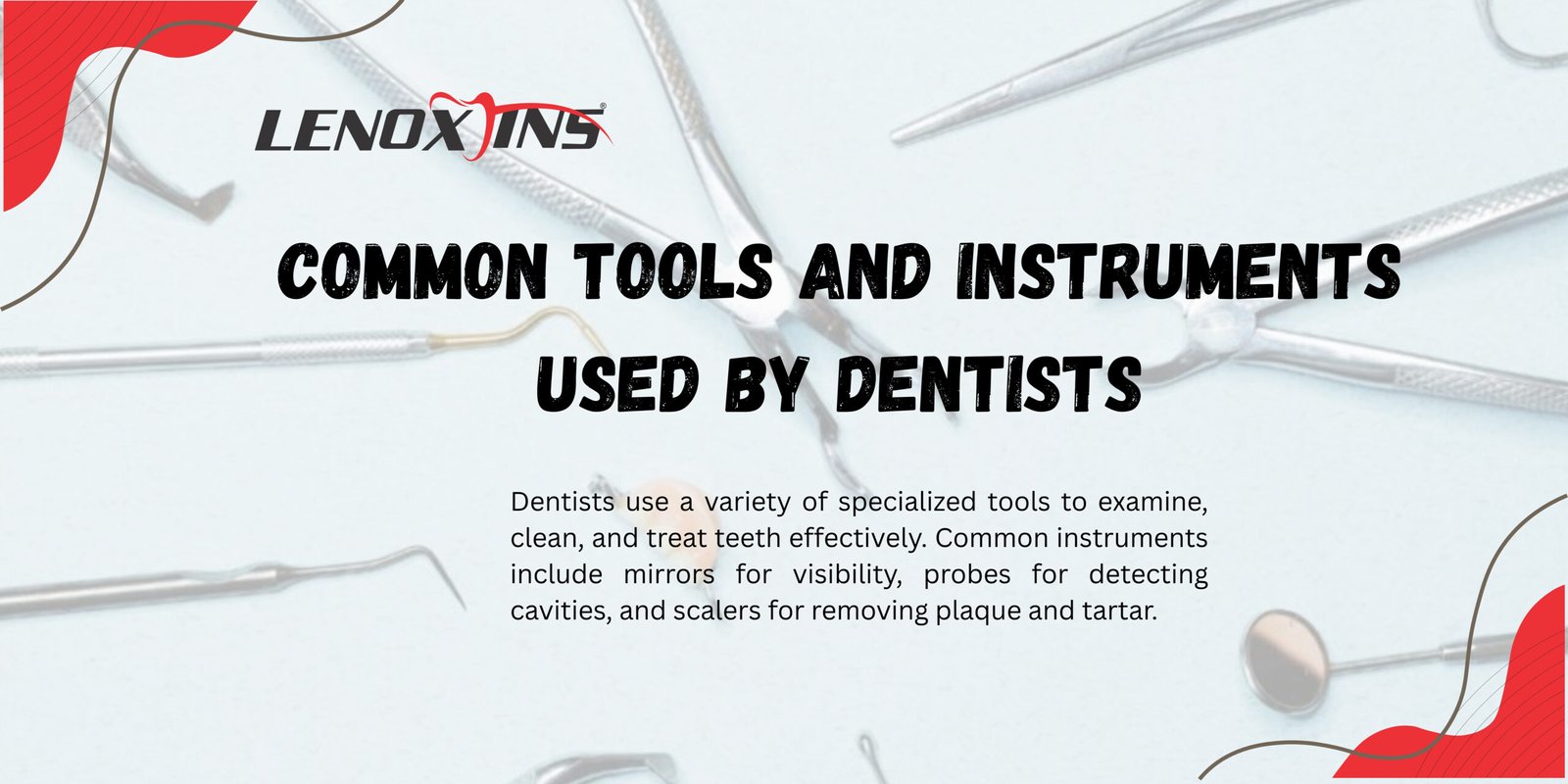
Essential Dental Tools & Instruments: A Complete Guide to Instruments and Their Functions
Dentists utilize a range of specialized instruments to accurately diagnose, effectively restore, and safely treat oral health concerns. Understanding the common tools and instruments dentists employ helps both patients and practitioners appreciate the precision involved in every procedure. This guide covers eight key areas: diagnostic devices, restorative and surgical tools, endodontic and periodontal instruments, cutting-edge technologies, sterilization best practices, specialized procedure equipment, and ergonomic advancements. You’ll find definitions, how they work, their advantages, practical applications, and emerging trends in dentistry as of October 2025. By the end, you’ll have a clear grasp of how each instrument contributes to oral care—from the reflective diagnostics of a mouth mirror to AI-powered imaging and laser treatments—all while ensuring patient comfort and operational efficiency.
What Are the Most Common Dental Instruments and Their Functions?
Dental instruments are fundamental to oral examinations, treatments, and surgeries. These tools span from simple mirrors and probes for diagnosis to high-speed handpieces for restorations. Each instrument is designed for a specific purpose—whether it’s for visualization, decay removal, tissue retraction, or cutting—and contributes to efficient patient care. For instance, a mouth mirror reflects light into hard-to-reach areas, while a scaler removes plaque and tartar. Knowing these roles clarifies why dentists select particular devices during routine check-ups or complex procedures.
Here’s a breakdown of five foundational dental instruments and their primary roles:
| Instrument Name | Primary Function | Used For Procedure |
|---|---|---|
| Mouth Mirror | Indirect vision and illumination | Oral examination |
| Explorer (Probe) | Detecting decay and restoration margins | Cavity detection |
| Scaler | Plaque and tartar removal | Prophylaxis (cleaning) |
| High-Speed Handpiece | Cutting enamel and dentin | Cavity preparation and drilling |
| Forceps | Grasping and extraction | Tooth removal |
Each of these instruments plays a vital role in a phase of dental care and forms the basis for specialized tools used in restorative, surgical, and periodontal treatments. Their effectiveness hinges on precise engineering, high-quality stainless steel construction, and diligent maintenance, ensuring dependable performance during patient appointments.
What Are the 5 Basic Dental Instruments Every Dentist Uses?
Dentists routinely rely on five fundamental dental instruments for comprehensive oral care:
- A mouth mirror offers indirect vision and aids in retracting soft tissues.
- An explorer (probe) detects surface irregularities and decay in tooth enamel.
- A scaler removes hardened plaque from tooth surfaces and along the gum line.
- A curette cleans deeper periodontal pockets to address gum disease.
- A high-speed handpiece prepares cavities and shapes restorative materials.
These five tools establish a core workflow that supports accurate diagnosis, effective cleaning, and efficient restoration in nearly every dental visit.
How Do Diagnostic Dental Tools Aid in Oral Examinations?
Diagnostic instruments allow dentists to visualize, probe, and assess oral health with great accuracy. A mouth mirror reflects light into posterior areas while retracting cheeks, and an explorer identifies enamel defects through tactile feedback. Intraoral cameras capture high-definition images of areas that are difficult to see, improving patient understanding. These devices work together to detect early decay, cracks, and periodontal issues, reducing the risk of advanced disease. The integration of digital X-ray machines further enhances diagnostic precision by revealing underlying bone structures and hidden cavities, aiding in informed treatment planning.
Which Instruments Are Essential for Restorative Dental Procedures?
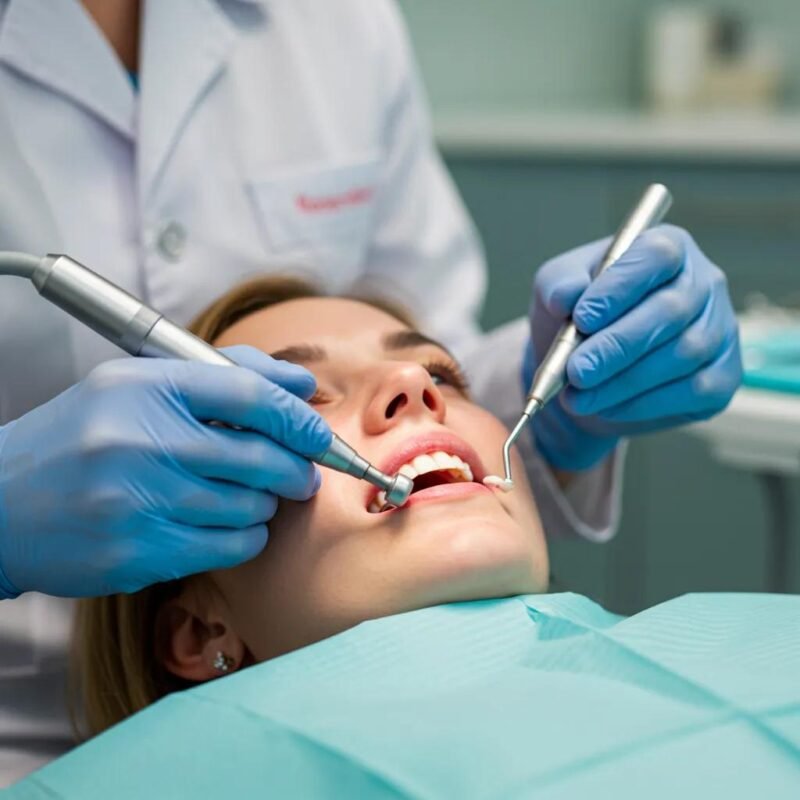
Restorative dentistry relies on tools designed to remove decay, shape cavities, and place filling materials. Excavators scrape away softened dentin, while carbide and diamond burs attached to handpieces cut enamel and shape cavity walls. Amalgam carriers precisely deliver filling material, and burnishers polish the edges of restorations. Composite placement instruments sculpt resin materials before they are cured. These tools work in unison to restore tooth form and function, maintain proper bite alignment, and ensure the long-term durability of restorations.
What Surgical Instruments Are Used in Tooth Extractions and Oral Surgeries?
Surgical dental instruments are used for atraumatic tooth removal and minor oral surgeries. Elevators apply leverage to gently loosen a tooth from its socket, and extraction forceps grip and remove the tooth. Scalpels are used to make incisions in gingival tissue, while periosteal elevators lift and reflect soft tissue flaps. Bone rongeurs trim excess alveolar bone, and suturing needles are used to close surgical sites. The ergonomic design and precise tip shape of each instrument support controlled tissue manipulation, minimize trauma, and promote faster healing after surgery.
How Do Endodontic and Periodontal Instruments Support Specialized Treatments?
Endodontic files and reamers are used to clean and shape the intricate systems within root canals, removing infected pulp and preparing the canals for filling. Gutta-percha carriers are used to place the sealing material, and paper points are used to dry the canals. Periodontal probes measure pocket depths to assess the severity of gum disease, while scalers and curettes remove calculus and biofilm from below the gum line. Gracey curettes feature specially angled blades designed for specific tooth surfaces, promoting tissue health. Together, these instruments enable targeted therapies to preserve natural teeth and maintain periodontal integrity.
How Are Dental Instruments Categorized by Their Uses and Types?
Organizing dental instruments by category clarifies their functions and helps streamline clinical workflows. Classification typically includes diagnostic, restorative, surgical, endodontic, periodontal, sterilization, and advanced technology categories. This structure aligns each instrument with its procedural role, aids in managing inventory, and supports the training of new clinicians. Understanding instrument taxonomy also informs purchasing decisions, ensuring a well-rounded set of tools for comprehensive patient care.
Here’s an overview of major instrument categories and their key features:
| Category | Defining Characteristic | Examples |
|---|---|---|
| Diagnostic | Tools for visual and tactile assessment | Mouth mirrors, probes |
| Restorative | Devices for cutting, shaping, and material delivery | Burs, handpieces, burnishers |
| Surgical | Instruments for manipulating soft tissue and bone | Forceps, elevators, scalpels |
| Endodontic | Tools for cleaning and shaping root canals | Files, reamers, paper points |
| Periodontal | Instruments for subgingival cleaning and measurement | Scalers, curettes, periodontal probes |
| Sterilization | Equipment for cleaning and disinfecting | Autoclaves, ultrasonic cleaners |
| Advanced Tech | Digital and laser-based devices | Intraoral cameras, dental lasers |
What Defines Diagnostic Dental Instruments Like Mouth Mirrors and Probes?
Diagnostic instruments serve two primary functions: visualization and tactile exploration. A mouth mirror has a small, reflective surface that illuminates posterior areas and retracts soft tissues. Probes, such as the sickle explorer, detect enamel irregularities and assess the margins of restorations. Periodontal probes measure the depth of the gingival sulcus to evaluate gum health. Combining direct visual feedback with tactile information allows for the early detection of decay, cracks, and periodontal disease, supporting timely intervention.
Which Tools Are Included in Restorative Dental Instruments and Their Uses?
Restorative instruments are used for removing decay, shaping cavities, and placing dental materials. Excavators physically remove soft dentin, burs attached to high-speed handpieces cut through enamel, and amalgam carriers place filling material. Composite placement instruments are used to sculpt resin before it is cured with a light-emitting diode (LED) curing light. Burnishers polish the edges of restorations and adapt materials to the tooth structure. Each tool provides precise control over the contours and contact points of restorations with adjacent teeth.
What Are the Key Surgical Dental Instruments and Their Roles?
Surgical instruments used for extractions and minor oral surgeries are designed to preserve tissue and enhance visibility. Elevators are used to apply leverage to luxate teeth, and forceps are used to grip the tooth crown for extraction. Scalpels are used to make incisions in the gingiva, while bone rongeurs trim sharp bone edges. Suturing needles and forceps are used to close incisions, holding tissues together for healing. These instruments are designed for comfortable handling and easy sterilization to support frequent use and patient safety.
How Do Endodontic Instruments Facilitate Root Canal Treatments?
Endodontic treatment requires precise cleaning and shaping of the root canal system. Stainless steel and nickel-titanium files are used to mechanically remove pulp tissue and shape the canal walls. Reamers are used to enlarge the canal diameter uniformly, and paper points absorb moisture. Rotary handpieces automate file rotation for consistent shaping. Burs are used to create access cavities for instrumentation. These devices work together to eliminate infection, prepare the canals for filling, and seal the root system to prevent reinfection.
What Periodontal Instruments Are Used for Gum Disease and Cleaning?
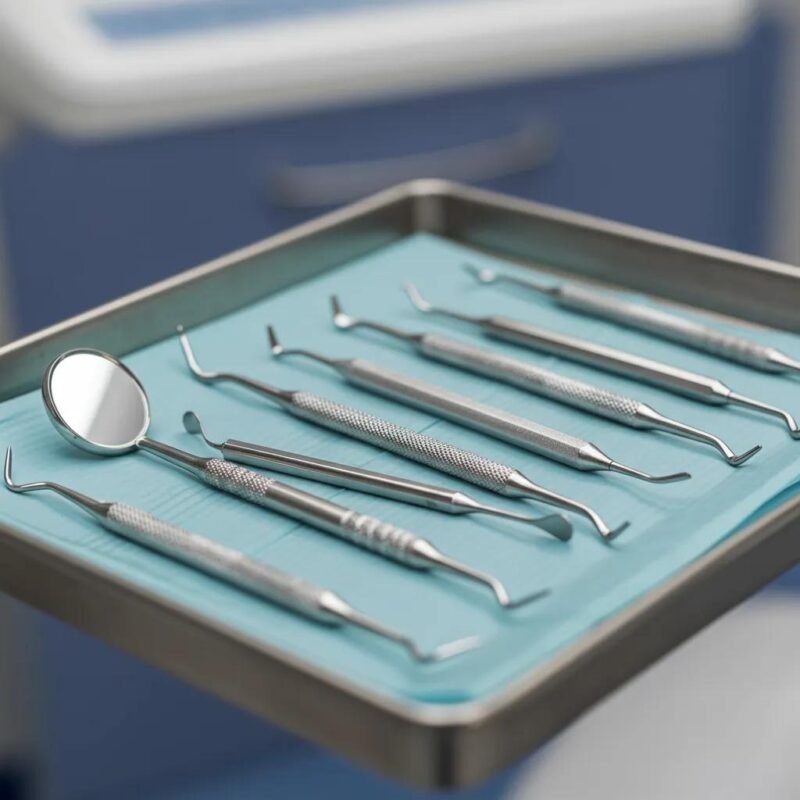
Periodontal therapy involves the use of scalers, curettes, and periodontal probes to manage gum disease. Ultrasonic scalers vibrate at high frequencies to dislodge calculus and biofilm with minimal effort from the operator. Hand scalers remove surface deposits above the gum line, while Gracey curettes are designed to access subgingival pockets for deeper cleaning. Probes are used to measure pocket depths and assess attachment levels. Regular use of these instruments helps control periodontal pathogens, promotes tissue healing, and prevents the progression of the disease.
Which Sterilization and Hygiene Equipment Ensure Dental Instrument Safety?
Effective sterilization equipment is crucial for protecting patients and staff from cross-contamination. Autoclaves use pressurized steam to sterilize heat-resistant instruments, while ultrasonic cleaners use cavitation to remove debris. High-performance air filtration systems remove aerosolized particles during procedures. Instrument washers automate the cleaning process before sterilization. Adhering to sterilization protocols ensures that each device meets infection control standards, safeguarding clinical environments and patient health.
What Are the Names and Functions of Essential Dentist Tools?
Every dental procedure relies on a specific set of named tools that perform critical functions. Understanding the name and role of each instrument improves communication between practitioners and patients. Here is a concise list of key tools and their primary functions:
- Mouth Mirror: Enhances visibility by reflecting light and retracting tissues.
- Dental Explorer/Probe: Detects decay, assesses margins, and measures pocket depths.
- High-Speed Dental Drill: Cuts enamel and shapes cavities with precision burs.
- Dental Forceps & Elevators: Loosen and extract teeth during surgical procedures.
- Scalers & Curettes: Remove plaque, tartar, and biofilm in periodontal therapy.
How Does a Dental Mouth Mirror Enhance Oral Visibility?
A dental mouth mirror consists of a small, angled mirror attached to a handle, providing indirect vision of posterior teeth and reflecting light into areas that would otherwise be inaccessible. It also retracts the cheeks and tongue to maintain a clear working area. This instrument aids in the accurate diagnosis of cavities, fractures, and restoration margins by combining illumination with magnified reflection.
What Is the Role of Dental Probes and Explorers in Diagnosis?
Dental probes and explorers have fine, pointed tips designed to detect surface irregularities and soft spots in enamel. The explorer’s sharp hook can sense demineralized areas, while periodontal probes measure the depth of the gingival sulcus to assess gum attachment. Together, they help map the progression of decay and the state of periodontal health, guiding treatment decisions.
How Do Dental Drills and Handpieces Work in Cavity Preparation?
Dental drills consist of high-speed handpieces that rotate carbide or diamond burs at speeds up to 400,000 RPM, efficiently cutting through enamel and dentin. The mechanism uses compressed air or electric motors to power the burr’s rotation, allowing for precise removal of decay and shaping of cavity walls. A cooling water spray is used to prevent thermal damage to the pulp tissues.
What Are the Uses of Dental Forceps and Elevators in Extractions?
Dental elevators apply controlled leverage to loosen a tooth from its socket by helping to sever the periodontal ligament fibers. Once the tooth is loosened, forceps are used to grip the crown for extraction. Forceps come with beak shapes designed to match specific tooth anatomy—molars, premolars, incisors—ensuring secure removal with minimal risk of root fracture and optimal patient comfort.
How Are Scalers and Curettes Used in Periodontal Therapy?
Scalers and curettes are used to clean tooth surfaces by physically removing calculus and biofilm. Ultrasonic scalers vibrate at high frequencies to dislodge deposits, while hand-held curettes scrape subgingival pockets to eliminate bacteria. Gracey curettes have offset blades specifically designed for different tooth surfaces, promoting precise adaptation to the tissue and supporting periodontal reattachment.
How Are Modern Dental Instruments and Technologies Changing Dentistry?
Dental technology is advancing rapidly in 2025, incorporating digital, laser, and AI-driven systems that enhance precision, patient comfort, and practice efficiency. Artificial intelligence automates image analysis to detect early lesions, while 3D printing allows for in-office production of crowns and aligners with sub-millimeter accuracy. Laser dentistry reduces discomfort and speeds up healing in soft-tissue procedures. Teledentistry platforms extend care to remote patients through secure video consultations. Digital Smile Design software maps patient preferences onto 3D models, improving aesthetic outcomes and satisfaction. These innovations are collectively redefining clinical workflows and patient experiences in modern dental practices.
What Role Does AI Play in Enhancing Dental Diagnostics and Treatment Planning?
AI in dentistry utilizes machine-learning algorithms to analyze radiographs and intraoral scans, identifying cavities, root fractures, and periodontal bone loss with high accuracy. Predictive analytics can recommend treatment sequences based on historical data, optimizing clinical outcomes. Integrating AI helps reduce human error, speeds up diagnosis, and supports evidence-based decision-making in complex cases.
How Is 3D Printing Revolutionizing Dental Prosthetics and Appliances?
3D printing enables the on-site fabrication of crowns, bridges, surgical guides, and orthodontic aligners directly from digital impressions. By layering biocompatible resins, precise, customized restorations can be produced in a fraction of the time required by traditional laboratories. The dental 3D printing market is projected to experience a 26.4 percent compound annual growth rate between 2024 and 2030, reflecting its rapid adoption in clinical settings.
Dental Instruments: Evolution, Classification, and Ergonomic Design
This review examines the classification of dental instruments, their evolution, and the exploration of dental instruments from their classification and ergonomic design to
INNOVATIONS AND STANDARD PRACTICES IN DENTAL INSTRUMENTATION: A COMPREHENSIVE REVIEW, Z Surlari, 2024
What Are the Benefits of Laser Dentistry for Minimally Invasive Procedures?
Dental lasers can cut and reshape soft tissues with high precision, delivering energy in controlled wavelengths that coagulate proteins and minimize bleeding. In cavity detection, laser fluorescence highlights demineralized enamel before drilling. Laser-assisted periodontal therapy promotes faster healing and reduces discomfort after treatment. Patients benefit from reduced need for anesthesia and shorter recovery times.
How Do Teledentistry Platforms Improve Access to Dental Care?
Teledentistry platforms connect patients and providers through secure video and imaging portals, enabling remote consultations, treatment planning, and post-operative follow-ups. This approach expands access to care in underserved areas, reduces travel burdens, and speeds up the triage process for urgent concerns. Clinicians can review uploaded photos or scans, recommend interim care, and schedule in-office visits only when necessary.
What Is Digital Smile Design and Its Impact on Patient Satisfaction?
Digital Smile Design uses 3D facial scanning and aesthetic software to map ideal tooth shapes and positions based on lip dynamics and facial proportions. Virtual mock-ups allow patients to preview potential outcomes, fostering shared decision-making and reducing the need for restoration revisions. Enhanced communication and predictability lead to higher satisfaction rates and increased treatment acceptance.
What Are the Best Practices for Maintenance and Sterilization of Dental Instruments?
Proper maintenance and sterilization extend the lifespan of instruments, ensure clinical safety, and prevent cross-contamination. Steam autoclaves remain the standard for sterilizing heat-resistant tools, while ultrasonic cleaners effectively remove organic debris before sterilization. Emerging technologies include smart sterilization units with AI-driven cycle monitoring and advanced air filtration systems that capture aerosols during procedures. Following manufacturer guidelines for cleaning, lubrication, and storage helps maintain instrument integrity and ensures compliance with health regulations.
Why Is Sterilization Critical in Preventing Cross-Contamination?
Sterilization eliminates all microbial life, including spores, from instrument surfaces. Without complete sterilization, pathogens can be transferred between patients, potentially leading to infection outbreaks. Implementing validated sterilization protocols—which include precleaning, packaging, autoclaving, and monitoring—protects patient health and upholds professional standards in infection control.
How Do Autoclaves and Ultrasonic Cleaners Work in Instrument Sterilization?
Autoclaves use pressurized steam at high temperatures (121–134 °C) to penetrate instrument surfaces and denature microbial proteins. Ultrasonic cleaners generate cavitation bubbles through high-frequency sound waves, which dislodge debris from intricate areas. Instruments are typically cleaned in an ultrasonic cleaner before autoclaving to ensure thorough sterilization. This two-step process guarantees both effective mechanical cleaning and microbiological safety.
What Are the Latest Advances in Sterilization Technology for Dental Clinics?
Recent developments include AI-enhanced sterilization units that automatically adjust cycle parameters based on the instrument load and type, improving efficiency and safety. Mobile sterilization trolleys now integrate air purification systems to capture aerosols during tray preparation. Smart sensors provide real-time cycle data and automated compliance reporting, streamlining clinic workflows and documentation.
How Should Dentists Properly Care for and Maintain Their Instruments?
Dentists should rinse instruments immediately after use, use enzymatic detergents, and follow ultrasonic cleaning cycles before autoclaving. Moving parts of handpieces should be lubricated according to manufacturer instructions, and instruments must be dried completely before storage to prevent corrosion. Tools should be stored in sealed cabinets or trays to maintain sterility until needed. Regular inspection for wear or damage ensures that instruments are replaced before their performance is compromised.
What Are the Specialized Instruments Used in Specific Dental Procedures?
Different dental procedures require specific instrument sets to achieve optimal results. Root canal therapy, implant placement, orthodontic adjustments, and periodontal surgeries each necessitate unique tools. Endodontic kits include specialized files, obturation carriers, and apex locators. Implant surgeries require drills with guided surgical stents and torque-controlled drivers. Orthodontic instruments—such as archwire pliers, bracket seating instruments, and ligature cutters—facilitate bracket placement and archwire adjustments. Periodontal surgeries utilize microsurgical blades, bone graft carriers, and tissue retractors. Recognizing these specialized sets helps clinicians prepare efficiently and ensures procedural accuracy.
Which Instruments Are Used for Root Canal Treatment and Their Functions?
Root canal treatment involves the use of endodontic files and reamers to clean and shape canals, an apex locator to determine root length, and gutta-percha carriers to fill and seal the canals. Hand files are used for manual debris removal, while rotary files create a consistent taper. Irrigation syringes deliver disinfecting solutions, and paper points absorb moisture, all contributing to optimal obturation.
What Tools Are Essential for Dental Implants and Oral Surgery?
Implant placement kits include sequential pilot and twist drills for preparing the osteotomy, depth gauges for accurate implant positioning, and torque wrenches for controlled insertion. Surgical stents guide the angulation of the drills. Periosteal elevators are used to reflect soft tissue, and suturing instruments are used to close incisions. Bone graft carriers deliver regenerative material to support osseointegration.
How Do Orthodontic Instruments Differ from General Dental Tools?
Orthodontic instruments are designed for tooth movement rather than decay removal or extraction. Bracket placement tweezers are used to align and hold brackets for bonding. Pliers are used to bend and cut archwires, separators create space between teeth, and ligature directors position elastomeric ties. These tools are engineered for precise wire manipulation and bracket adjustments over multiple treatment visits.
What Instruments Are Used in Periodontal Therapy and Gum Treatments?
Periodontal surgery employs microsurgical blades for precise incisions, regenerative membrane holders for guided tissue regeneration, and bone graft carriers for defect filling. Ultrasonic scalers with subgingival tips are used to remove calculus below the gum line. Periodontal curettes are used for refining pocket debridement and promoting connective tissue reattachment.
How Has the Evolution of Dental Instruments Improved Patient Comfort and Dentist Ergonomics?
The history of dental instrument design shows a progression from basic tools to sophisticated, patient-friendly devices. Early instruments were handcrafted with limited precision, often causing discomfort and strain for the operator. Modern designs utilize lightweight alloys, ergonomic handles, and vibration-dampening features to reduce hand fatigue and improve grip. Minimally invasive lasers and fiber-optic illumination decrease procedure time and tissue trauma, enhancing patient comfort. Smart dental units controlled via tablet interfaces streamline workflows. Together, these innovations create a more comfortable treatment experience and support clinician well-being.
What Are the Key Milestones in the Development of Dental Tools?
Dental mirrors became common in the 19th century, replacing earlier indirect visualization methods. Electric handpieces emerged in the 1950s, significantly increasing cutting speed and precision. The 1980s saw the introduction of ultrasonic scalers, revolutionizing cleaning procedures. Digital radiography and intraoral scanners appeared in the 2000s, reducing radiation exposure. The last decade has witnessed the integration of AI diagnostics and 3D printers into clinics, marking a new era of personalized dentistry.
How Do Modern Instrument Designs Enhance Dentist Ergonomics?
Ergonomic handles feature textured grips and balanced weight distribution to minimize wrist strain during repetitive procedures. Low-vibration handpieces reduce hand fatigue, while cordless designs offer greater mobility around the patient. Integrated LED lighting in mirrors and handpieces reduces neck and back strain by improving visibility without requiring excessive head tilting.
In What Ways Do Advanced Tools Improve Patient Experience and Comfort?
Minimally invasive lasers and air-abrasion systems reduce the need for anesthesia and eliminate the noise associated with drills, thereby lowering patient anxiety. Fiber-optic illumination aids in precise incisions, supporting better soft-tissue healing. Chairside 3D printing allows for same-day restorations, shortening treatment timelines and reducing the number of appointments required. Collectively, these technologies create a calmer, more efficient clinical environment for both patients and clinicians.
The evolution of dental instruments highlights continuous innovation, with each advancement driven by the goals of improving patient care, increasing procedural efficiency, and enhancing ergonomic well-being. As technology continues to advance, the future promises even more precise, less invasive approaches that will further elevate oral health outcomes and practitioner performance.
Conclusion
Understanding the essential dental instruments and their functions is crucial for both practitioners and patients, as it enhances the quality of oral care. By familiarizing yourself with these tools, you can appreciate the precision and expertise involved in dental procedures. For those seeking to learn more about maintaining optimal oral health, consider exploring additional resources on dental care practices. Visit our website for comprehensive guides and expert advice tailored to your dental needs.



